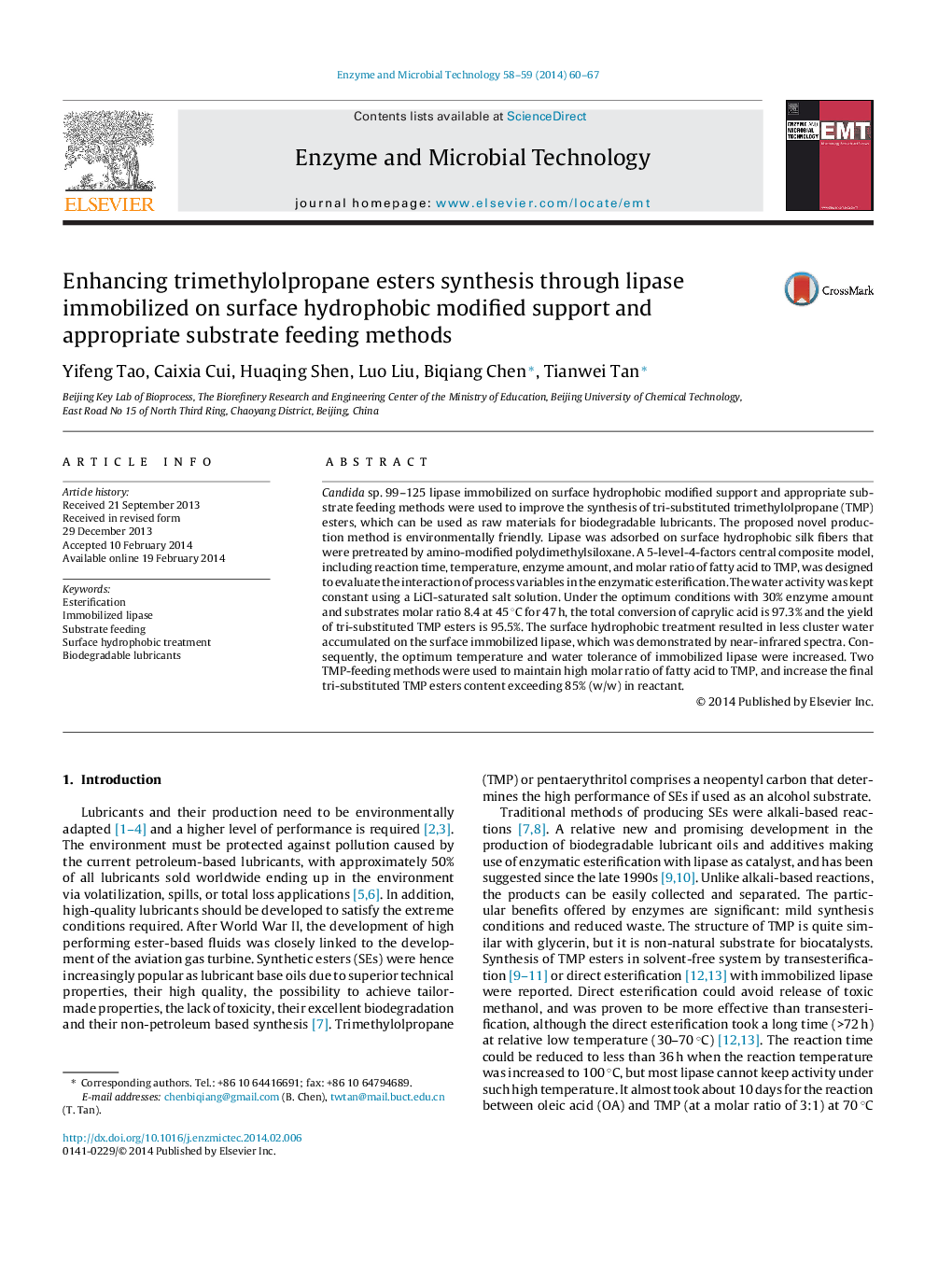| Article ID | Journal | Published Year | Pages | File Type |
|---|---|---|---|---|
| 17206 | Enzyme and Microbial Technology | 2014 | 8 Pages |
•Lipase was absorbed on surface hydrophobic modified silk fibers.•Immobilized lipase and feeding methods improve synthesis of tri-TMP esters.•Immobilized lipas showed increase esterification activity and decrease hydrolysis activity.•TMP-feeding methods kept a high molar ratio of fatty acid to TMP during process.
Candida sp. 99–125 lipase immobilized on surface hydrophobic modified support and appropriate substrate feeding methods were used to improve the synthesis of tri-substituted trimethylolpropane (TMP) esters, which can be used as raw materials for biodegradable lubricants. The proposed novel production method is environmentally friendly. Lipase was adsorbed on surface hydrophobic silk fibers that were pretreated by amino-modified polydimethylsiloxane. A 5-level-4-factors central composite model, including reaction time, temperature, enzyme amount, and molar ratio of fatty acid to TMP, was designed to evaluate the interaction of process variables in the enzymatic esterification. The water activity was kept constant using a LiCl-saturated salt solution. Under the optimum conditions with 30% enzyme amount and substrates molar ratio 8.4 at 45 °C for 47 h, the total conversion of caprylic acid is 97.3% and the yield of tri-substituted TMP esters is 95.5%. The surface hydrophobic treatment resulted in less cluster water accumulated on the surface immobilized lipase, which was demonstrated by near-infrared spectra. Consequently, the optimum temperature and water tolerance of immobilized lipase were increased. Two TMP-feeding methods were used to maintain high molar ratio of fatty acid to TMP, and increase the final tri-substituted TMP esters content exceeding 85% (w/w) in reactant.
